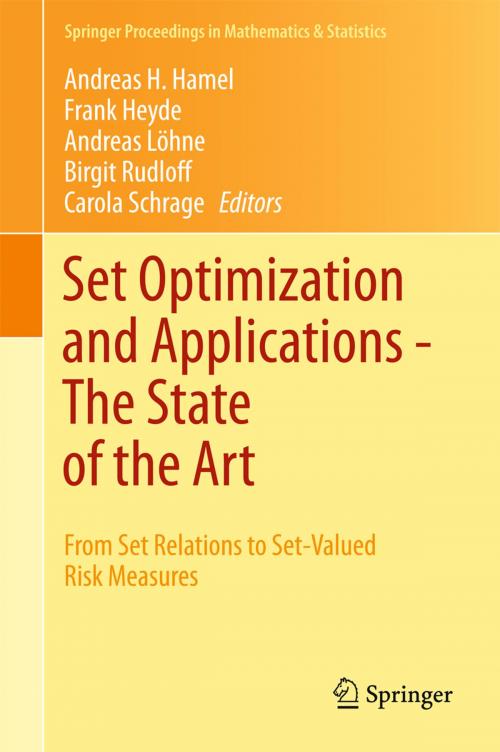Set Optimization and Applications - The State of the Art
From Set Relations to Set-Valued Risk Measures
Nonfiction, Science & Nature, Mathematics, Calculus, Applied| Author: | ISBN: | 9783662486702 | |
| Publisher: | Springer Berlin Heidelberg | Publication: | November 21, 2015 |
| Imprint: | Springer | Language: | English |
| Author: | |
| ISBN: | 9783662486702 |
| Publisher: | Springer Berlin Heidelberg |
| Publication: | November 21, 2015 |
| Imprint: | Springer |
| Language: | English |
This volume presents five surveys with extensive bibliographies and six original contributions on set optimization and its applications in mathematical finance and game theory. The topics range from more conventional approaches that look for minimal/maximal elements with respect to vector orders or set relations, to the new complete-lattice approach that comprises a coherent solution concept for set optimization problems, along with existence results, duality theorems, optimality conditions, variational inequalities and theoretical foundations for algorithms. Modern approaches to scalarization methods can be found as well as a fundamental contribution to conditional analysis. The theory is tailor-made for financial applications, in particular risk evaluation and [super-]hedging for market models with transaction costs, but it also provides a refreshing new perspective on vector optimization. There is no comparable volume on the market, making the book an invaluable resource for researchers working in vector optimization and multi-criteria decision-making, mathematical finance and economics as well as [set-valued] variational analysis.
This volume presents five surveys with extensive bibliographies and six original contributions on set optimization and its applications in mathematical finance and game theory. The topics range from more conventional approaches that look for minimal/maximal elements with respect to vector orders or set relations, to the new complete-lattice approach that comprises a coherent solution concept for set optimization problems, along with existence results, duality theorems, optimality conditions, variational inequalities and theoretical foundations for algorithms. Modern approaches to scalarization methods can be found as well as a fundamental contribution to conditional analysis. The theory is tailor-made for financial applications, in particular risk evaluation and [super-]hedging for market models with transaction costs, but it also provides a refreshing new perspective on vector optimization. There is no comparable volume on the market, making the book an invaluable resource for researchers working in vector optimization and multi-criteria decision-making, mathematical finance and economics as well as [set-valued] variational analysis.















